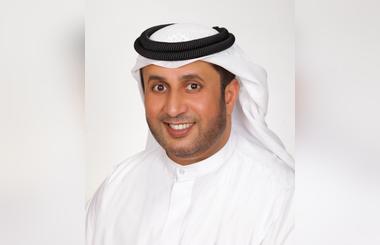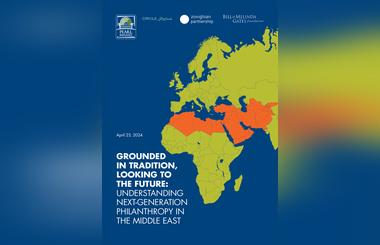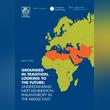
- ID Number 24319
- Aug 08, 2023
- 202
Exceptional year for UAE and Dubai aviation industry
His Highness Sheikh Ahmed bin Saeed Al Maktoum, President of Dubai Civil Aviation Authority and Chairman of Dubai Airports, has praised the support of local and international stakeholders for their contribution for making 2013 an exceptional year of unprecedented growth and achievement for the aviation industry in Dubai.
In his message in the February edition of Via Dubai, the monthly bilingual newsletter of Dubai Civil Aviation Authority, released in both print and digital formats, remarked: By any measurement, 2013 was an exceptional year for the UAE due to the tremendous achievements the country has made in almost every economic domain in general and aviation sector in particular. This complements the amazing progress achieved by the UAE over the years and which are etched in our memories and reflects our passion to excel in every domain.
He said the UAE stunned the world by bagging the rights, through a multi-tier selection process, to host World Expo in Dubai in 2020. The selection of UAE to stage the worlds third biggest global event after the Olympics and FIFA World Cup is a testimony to the professional approach and adept planning worked out by all the parties concerned in a way that makes all of us proud, he added.
Also last year, Dubai Airshow recorded the biggest deals in the civil aviation history exceeding $213.4 billion, stamping the emirates strong position as an aviation business hub. It was also last year that His Highness Sheikh Mohammed bin Rashid Al Maktoum, Vice President and Prime Minister of UAE and Ruler of Dubai, unveiled the UAE Agenda which showcases the countrys determination to become the best in the world in infrastructure in general and the aviation sector in particular.
He said the phenomenal number of passengers handled by Dubai International Airport last year will be yet another prove of 2013 being an exceptional year. Preliminary results show that the number of passengers surpassed 66.4 million compared with the 57 million recorded in the year 2012. Meanwhile, Dubai International Airports expansion plans costing more than $7.8 billion are progressing swiftly to increase the airports capacity to more than 90 million passengers with the completion of Concourse D by 2015 along with the expansion and modernization of Terminal 1 and 2. This is in addition to the opening of the passenger terminal of Al Maktoum International Airport in Dubai World Central (DWC) last year which will be transformed into an international travel hub in the next few years.
He said: We should pursue with passion and determination our biggest goal of Dubai becoming the number one airport in the world, not only for international passengers, which it is expected to become by 2015, but also in terms of services and facilities for the passengers. I personally believe that this achievement will the biggest and will go a long way towards our gigantic ambition to have the worlds excellent infrastructure that will support the local and international aviation industry.
Mohammed Ahli, Director General of DCAA, said: Dubai continues its amazing growth rate with more airlines and frequencies to and from different parts of the world. Dubai International Airport is moving forward towards becoming the worlds top airport for international passengers by 2015 after recording 66 million passengers in 2013.
He added: Despite the phenomenal growth that it has been witnessing over the years, Dubai boasts of an excellent aviation safety track record and its stakeholders have been working towards maintaining the hard-earned excellence.
He said one of the factors behind the Middle Easts success is adherence to global standards, according to IATA. The Middle East continues to be a great success story in the aviation industry. IATA noted that about $40 billion are being invested in airport infrastructure in the Arabian Gulf alone by far-sighted governments, but still the region faces a capacity shortfall. The Arabian Gulf success story is well-grounded in the spirit of cooperation. In fact the Arabian Gulf example is a best practice success story that the IATA is asking all governments to take note of.
In the cover story interview, Ibrahim Ahli, Director of Dubai Air Navigation Services (DANS) Serco, shares insights into the airspace constraints and what is being done to clear the crowded skies. He said the UAE airspace system was projected to accommodate 1.2 million aircraft movements by 2025. This target is broadly equivalent to the current volume of traffic handled in the New York or London areas. So the answer is yes this needs to be given top priority. The airspace will come under enhanced pressure with Dubai getting the rights to host the Expo 2020 whose three-fourth visitors are expected to be from outside the UAE.
He remarked: The importance of managing the UAE airspace efficiently is obvious, but the importance of harmonization with adjacent (and beyond) states is imperative. Without enhancing cooperation from these states, our growth will be hampered, and severe departures- as well as arrivals - delays are inevitable.
He disclosed that DANS was leading one of the two working groups formed as a result of the Airbus Prosky study conducted under the aegis of General Civil Aviation Authority (GCAA) for airspace enhancement. He said new technologies will support the modern airspace development and management. A region wide cooperation is mandatory to sustain the rapid growth of aviation in the Middle Eastern.
Michael Huerta, Administrator of the US Federal Aviation Administration (FAA), in his column, asserted that economic growth was bolstered by airports that have invested in long-term planning with the objective of meeting the growing aviation demand of the future.
A strong case for a long term approach for ATM data management was put across by Jeff Poole, Director General of Civil Air Navigation Services Organization (CANSO).
Insights into strength of Indias aviation industry and plans to enhance its growth in future were shared by Ajit Singh, Minister for Civil Aviation. He said the Indian airport system is poised to handle 336 million domestic and 85 million international passengers by 2020, making India the third largest aviation market. Moreover, it is estimated that commercial fleet size is expected to reach 1000 aircraft worth $45 billion from 400 today by 2020.
From Australia to UAE and Canada to China, airlines are in the race of fast-tracking their fleet modernization - the largest jet-buying spree in the history of civil aviation with orders for 8,200 new planes being placed with Airbus and Boeing.
A combined 24 planes are rolling off assembly lines each week. In Focus section details the trend and its impact on the future of air travel.
Developments in the UAE, Cargo and Logistics and Technology have been covered in the newsletter. The Flashback section details the soaring success of flydubai which, since its launch in 2009, has been steadily adding aircraft and new routes and currently serves 66 destinations.

Mazagan Beach & Golf Resort Invites Guests to Enjo...
- Apr 24, 2024

UAE teacher named regional winner of the 2024 Camb...
- Apr 24, 2024

Offering virtual clinic services and home visitati...
- Apr 24, 2024












